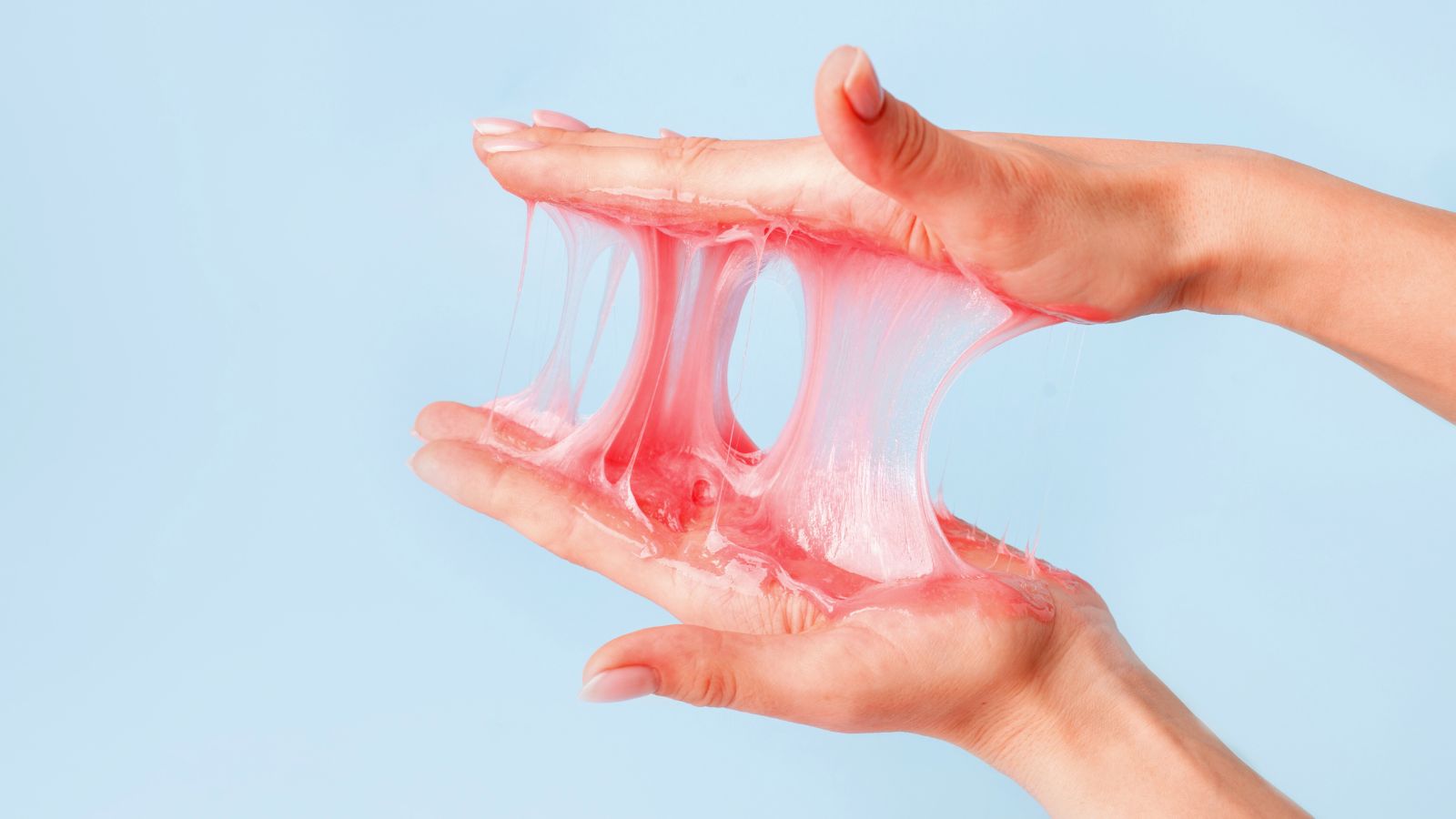Intention: To explore the potential of ASMR as a tool for expanding consciousness, offering techniques to use this sensory experience for relaxation and heightened awareness.
In the depths of human consciousness lies a familiar and mysterious phenomenon, a sensory experience that tingles the scalp and soothes the soul. ASMR, or Autonomous Sensory Meridian Response, has emerged from the shadows of individual experience into the spotlight of collective fascination. But what is the point of this curious sensation that millions now seek out?
ASMR is not just a pleasant feeling—it’s a gateway to altered states of consciousness, a tool for spiritual exploration, and a bridge between the mundane and the transcendent. This tingling, euphoric response to specific auditory or visual stimuli offers a unique path to relaxation and mindfulness. More importantly, it holds a promising therapeutic potential for stress reduction and trauma healing, resonating deeply with those who seek solace in the boundaries of perception.
As we attune ourselves deeper into the world of ASMR, we’ll explore its potential to induce trance-like states, its parallels with psychedelic experiences, and its significant role in expanding our understanding of consciousness itself. Could this seemingly simple sensation be a key to unlocking more profound levels of awareness? Might it offer insights into the nature of reality and our place within it? These are the intriguing questions that ASMR invites us to ponder.

Understanding ASMR
ASMR, a term coined in 2010 by Jennifer Allen, stands at the crossroads of sensation and perception. This phenomenon, characterized by a pleasant tingling that typically begins in the scalp and travels down the spine, defies easy categorization. It’s a deeply personal experience, yet one shared by countless individuals across the globe.
The triggers for ASMR are as diverse as the human psyche itself. Whispers, gentle tapping, the rustling of pages, or the sight of meticulous, focused tasks can all spark this enigmatic response. For some, the roots of ASMR lie in childhood experiences. One might recall a compassionate teacher leaning in during a test, their whispered guidance clarifying a problematic question and inadvertently triggering a soothing cascade of tingles.
As adults, many find themselves drawn to specific ASMR triggers. Does anyone else confess to a near addiction to haircut and shaving videos on YouTube? The soft snip of scissors and the gentle razor scrape become portals to profound relaxation. These seemingly mundane activities transform into gateways to altered states of consciousness, offering a respite from the chaos of everyday life.
ASMR challenges our understanding of sensory perception and invites us to explore the hidden depths of our minds.

The Science Behind ASMR
The science of ASMR stands at the frontier of neuroscience and psychology, offering tantalizing glimpses into the workings of the human mind. As researchers investigate this phenomenon further, they uncover a complex interplay of neural pathways and psychological responses that challenge our understanding of sensory experiences.
Neuroimaging studies have revealed that ASMR triggers activate regions of the brain associated with reward and emotional arousal. The prefrontal cortex, nucleus accumbens, and insula light up during ASMR experiences mirroring patterns in other pleasurable activities. Intriguingly, these same areas are often implicated in meditative states and psychedelic experiences, hinting at deeper connections between ASMR and altered states of consciousness.
The release of neurotransmitters like oxytocin and endorphins during ASMR may explain its calming effects. These “feel-good” chemicals foster a sense of well-being and social bonding, potentially linking ASMR to our evolutionary past as social primates who found comfort in gentle grooming and soft vocalizations.
Psychologically, ASMR appears to induce a state of flow characterized by deep focus and loss of self-consciousness.
Moreover, the psychological effects of ASMR extend beyond mere relaxation. Regular practitioners report improved mood, reduced anxiety, and enhanced ability to cope with stress. Some even describe ASMR as a form of “mental massage,” providing relief from the constant chatter of the mind and offering a respite from the demands of modern life.
ASMR and Altered States of Consciousness
The parallels between ASMR and meditative states are striking. Both induce a heightened focus on the present moment, a deep sense of relaxation, and a shift in brain wave patterns. Where traditional meditation might use breath or a mantra as an anchor, ASMR employs sensory triggers to guide the mind into tranquil awareness. This sensory-rich approach can serve as a bridge for those who struggle with more abstract forms of meditation, offering a tangible focus for the wandering mind.
More intriguingly, regular ASMR experiences seem to pave the way for trance-like states. As the conscious mind relaxes its grip, many report sensations of floating, time distortion, and even out-of-body experiences. These phenomena bear a striking resemblance to hypnagogic states—the twilight zone between wakefulness and sleep—where the boundaries of perception blur and the subconscious mind takes center stage.
The potential for ASMR to induce these trance-like states raises profound questions about the nature of consciousness itself. Could these tingles be a key to unlocking dormant areas of our awareness? Might ASMR serve as a gentler, more accessible alternative to other consciousness-altering practices?
The Spiritual Dimension of ASMR
ASMR transcends mere physical sensation, venturing into the realm of spiritual practice. As a tool for deep relaxation, it opens doorways to self-reflection and inner exploration. The tingling cascade that flows from scalp to spine mirrors the movement of energy described in many Eastern traditions, suggesting a potential link to practices like Kundalini awakening.
Some practitioners report that regular ASMR experiences lead to heightened awareness of their body’s energy centers, akin to chakra alignment. The focus and presence cultivated through ASMR resonate with mindfulness teachings, offering a unique path to spiritual growth. In this light, ASMR becomes more than a pleasant feeling—it transforms into a gateway for consciousness expansion, inviting us to explore the subtle interconnections between sensation, energy, and spirit.

ASMR and Psychedelic Experiences
The intersection of ASMR and psychedelic experiences reveals a fascinating overlap in altered sensory perception. Both phenomena share the ability to heighten awareness, dissolve boundaries, and induce states of profound wonder and interconnectedness. The tingling sensations of ASMR often mirror the tactile hallucinations reported during psychedelic journeys, suggesting a common neurological pathway.
Intriguingly, some psychonauts have reported incorporating ASMR into their psychedelic practices. They describe ASMR triggers as potent tools for grounding during intense experiences or as catalysts for deepening their journeys. The gentle, repetitive nature of ASMR stimuli can serve as a soothing anchor, helping navigate the sometimes turbulent waters of psychedelic consciousness.
Moreover, regular ASMR practitioners often report experiences that echo aspects of psychedelic states: time dilation, heightened sensory awareness, and a sense of ego dissolution. This raises compelling questions about the potential of ASMR to access altered states of consciousness without the use of substances.
Therapeutic Applications of ASMR
The therapeutic potential of ASMR extends far beyond casual relaxation, offering a promising avenue for mental health treatment. Its ability to induce deep states of calm has made it a valuable tool for stress reduction and anxiety management. Many individuals report using ASMR as a natural alternative to medication, finding relief in its gentle triggers.
More intriguingly, emerging research suggests ASMR could play a role in trauma healing and PTSD treatment. The safe, controlled sensory experiences provided by ASMR may help individuals reconnect with their bodies and process traumatic memories in a non-threatening environment. The dissociative states sometimes induced by ASMR bear similarities to EMDR therapy, potentially offering a new approach to trauma processing.
Furthermore, ASMR’s ability to foster feelings of safety and nurturing could be particularly beneficial for those with attachment-related traumas.

Cultivating ASMR Sensitivity
At Reality Sandwich, we’ve immersed ourselves in cultivating ASMR sensitivity. Our research and collective experiences have yielded powerful techniques for enhancing these transcendent sensations. We advise our readers to approach this practice with the same reverence as any consciousness-expanding ritual.
Begin by crafting your sacred space. Dim the lights, silence your devices, and create a cocoon of comfort. High-quality headphones are not a luxury but necessary for the ASMR explorer. They will unveil layers of sound you never knew existed.
Embrace mindfulness as your ally. Before each session, spend five minutes in silent meditation. This primes your neural pathways, making them more receptive to the subtle energies of ASMR. As you engage with triggers, maintain a laser-like focus on each sensation. Every tingle is a gateway to deeper awareness.
We strongly recommend developing a personalized ASMR ritual. This might involve anointing yourself with essential oils, lighting specific candles, or reciting a mantra. Such rituals signal your subconscious that it’s time to open to the ASMR experience.
Diversify your triggers. While you may have favorites, true mastery comes from exploring the full spectrum of ASMR stimuli. Visual, auditory, and tactile triggers each offer unique pathways to altered states. Document your journeys in an ASMR journal, tracking the effectiveness of different triggers and your evolving sensitivity.
The Future of ASMR in Consciousness Exploration
The frontier of ASMR research beckons with tantalizing possibilities. Neuroscientists are mapping the brain’s response to ASMR triggers, uncovering links to neuroplasticity and altered states of consciousness. Studies exploring ASMR’s potential in treating depression and anxiety are underway, promising new therapeutic avenues.
The integration of ASMR with other mind-expanding practices is an exciting prospect. Combining ASMR with breathwork, sound healing, or even psychedelic therapies could amplify their effects, offering more accessible paths to profound experiences. Virtual and augmented reality technologies are poised to revolutionize ASMR, creating immersive environments that blur the lines between physical and digital sensations.
As pioneers in the realm of consciousness, we at Reality Sandwich invite you to embrace ASMR as a tool for self-discovery and mental expansion. Explore your triggers, cultivate your sensitivity, and allow the gentle tingles to guide you into unexplored territories of your mind. The future of consciousness exploration may be whispering in your ear, inviting you to listen closely.
FAQs
Is ASMR real or just a placebo effect?
ASMR is a genuine physiological response, not merely a placebo effect. Neuroimaging studies have shown distinct brain activation patterns during ASMR experiences, particularly in reward and emotional arousal areas. While the placebo effect may enhance ASMR for some individuals, the core experience is rooted in measurable neurological responses. The consistency of reports across diverse populations and cultures further supports ASMR’s validity as a natural phenomenon.
Can everyone experience ASMR?
Only some experience ASMR in the same way or intensity. Estimates suggest that about 20% of the population is highly responsive to ASMR triggers, while others may experience milder effects or none at all. Some individuals may discover their ASMR sensitivity later in life or through repeated exposure to triggers. Personality traits, sensory processing sensitivity, and genetic predisposition influence the capacity for ASMR.
How is ASMR different from frisson?
While ASMR and frisson involve pleasurable tingling sensations, they are distinct experiences. ASMR typically produces a prolonged, calming tingling that starts at the scalp and moves down the body. Frisson, often called “musical chills,” is a brief, intense sensation of shivers, usually triggered by emotional or aesthetic experiences like powerful music. ASMR is associated with relaxation, while frisson accompanies excitement or strong emotions.
Can ASMR be used as a sleep aid?
Many people find ASMR highly effective as a sleep aid. The relaxation induced by ASMR can help quiet an overactive mind and prepare the body for sleep. Some ASMR content is specifically designed for bedtime use, featuring soothing voices and calming visuals. However, it’s important to note that some individuals’ screen time before bed can interfere with sleep. Audio-only ASMR might be preferable for those sensitive to blue light. As with any sleep aid, individual responses may vary, and it’s best to experiment to find what works for you.
Are there any risks associated with ASMR?
ASMR is generally considered safe, with no known direct adverse effects. However, some individuals report experiencing “ASMR immunity” or diminished responses with frequent use, similar to developing a tolerance. Taking breaks from ASMR content can help maintain sensitivity. Additionally, those with misophonia (a solid aversion to certain sounds) might find some ASMR triggers distressing. As with any practice affecting mental states, individuals with a history of mental health issues should consult a healthcare professional before using ASMR as a therapeutic tool.
Can ASMR be addictive?
While ASMR isn’t considered clinically addictive, some people may develop a habitual reliance on it for relaxation or sleep. The pleasurable sensations and stress relief associated with ASMR can make it compelling to return regularly. However, this is considered a benign habit, like enjoying a nightly herbal tea. If ASMR use interferes with daily life or becomes a substitute for addressing underlying issues, it may be worth examining one’s relationship with the practice.
Can ASMR enhance meditation or mindfulness practices?
Many practitioners find that ASMR can complement and enhance meditation and mindfulness practices. The focused attention required to experience ASMR aligns well with mindfulness techniques. Some use ASMR as a gateway to deeper meditative states, finding that the tingling sensations help anchor their awareness in the present moment. However, it’s important to note that while ASMR can facilitate relaxation and focus, it shouldn’t be seen as a replacement for traditional meditation practices but as a potential tool in one’s spiritual toolkit.
Is there a connection between ASMR and lucid dreaming?
Some ASMR enthusiasts report an increased frequency of lucid dreams, though research in this area is limited. The relaxed yet aware state induced by ASMR bears similarities to the hypnagogic state often associated with lucid dream induction. Additionally, the heightened body awareness cultivated through ASMR practice may translate to increased awareness during dream states. While not a guaranteed method for inducing lucid dreams, ASMR could be used as part of a broader lucid dreaming practice.
How does ASMR relate to energy work or concepts like chakras?
In the context of energy work, some practitioners view ASMR sensations as a form of energy movement within the body. The tingling that typically begins at the crown of the head and moves downward is sometimes likened to the concept of Kundalini energy in yogic traditions. Some also associate ASMR triggers with stimulation or balancing of specific chakras. While these connections are mainly anecdotal and metaphysical, they highlight the potential spiritual dimensions of ASMR experiences for some individuals.
Can ASMR be used in conjunction with psychedelic integration practices?
Some psychonauts report using ASMR as part of their integration practices following psychedelic experiences. The calming effects of ASMR can help ground individuals as they process intense experiences. Additionally, the heightened sensory awareness often experienced during ASMR can serve as a gentle reminder of altered states, potentially helping to reconnect with insights gained during psychedelic journeys. However, it’s crucial to approach such practices with caution and ideally under the guidance of an experienced integration specialist.
Is there a difference between intentional and unintentional ASMR triggers?
Yes, there’s often a distinction between intentional ASMR content (explicitly created to trigger ASMR) and unintentional triggers (everyday situations that induce ASMR). Many people report that unintentional triggers in real-life situations can produce more intense ASMR experiences. This could be due to the authenticity of the situation or the element of surprise. However, intentional ASMR content allows for more control and customization of the experience, making it a reliable tool for those seeking to induce ASMR regularly.















